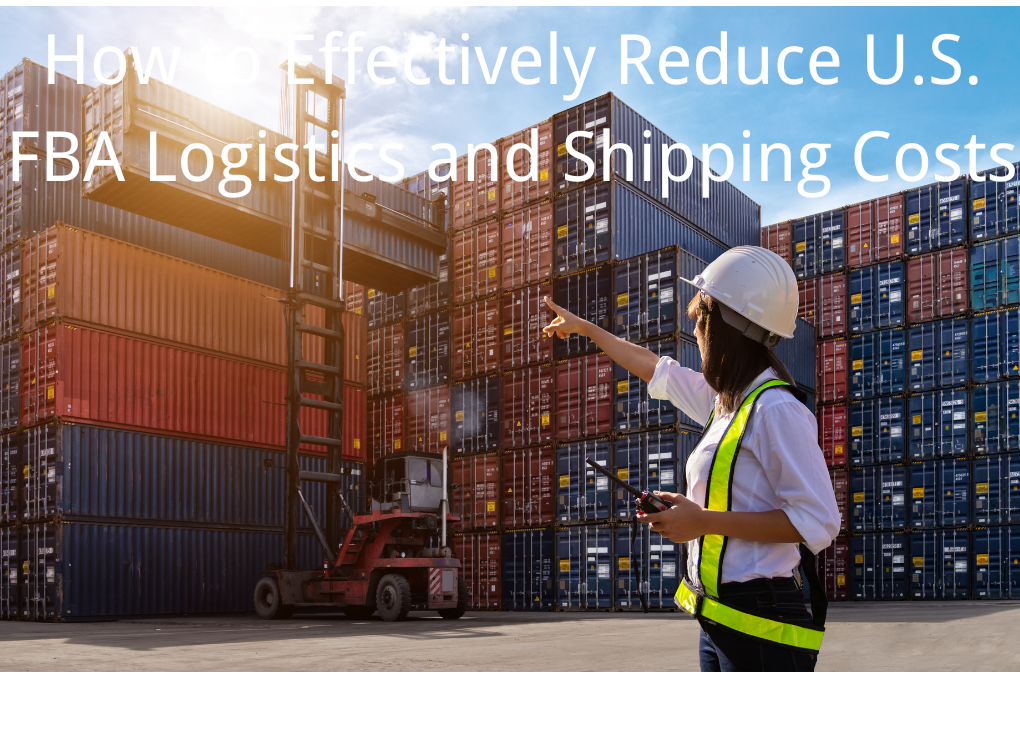FBA LCL Quote
FBA 40HQ FCL Quote
Amazon FBA (Fulfillment by Amazon) offers an efficient way for sellers to store and ship products, but one key aspect of managing your products involves understanding the distinction between Standard-size and Oversize items. These classifications directly impact your storage fees, fulfillment charges, and overall operational costs. Misclassifying your products can result in higher expenses, so it's crucial to know the differences.
For international sellers, especially those shipping products from China to the USA, working with a reliable freight forwarder China to USA Amazon FBA is essential. They help ensure that your products are delivered efficiently and classified correctly once they arrive at Amazon’s fulfillment centers.
In this guide, we'll explore how to distinguish between these categories, giving you the tools to avoid unnecessary fees and manage your business more effectively.
Standard-Size Product Requirements
Standard-size products are generally smaller and lighter, and they come with lower fulfillment fees. The rules for what qualifies as a standard-size product may seem straightforward, but precision is essential to ensure you're not inadvertently overclassifying your products.
Key Criteria for Standard-Size Products:
Standard-size products are limited to 20 pounds or less in weight.
For the dimensions, the longest side (typically height) must not exceed 18 inches.
The total size, calculated by adding length + girth, must remain under 130 inches.
Standard-size products are those typically found in common categories like books, clothing, toys, and small electronics. For instance, a pair of shoes or a small backpack would usually qualify as standard-size.
These size limitations ensure that standard-size products are easy to handle, package, and store within Amazon’s fulfillment centers. Because of their small size and lightweight nature, standard-size items benefit from cheaper storage and shipping fees.
Additional Guidelines for Measuring Standard-Size Products:
When it comes to measuring your product, make sure you account for the packaging dimensions as well. The girth, which is the perimeter of the product’s packaging, plays a significant role in determining whether your item qualifies as standard-size.
The formula for calculating the girth is as follows:
Girth = (2 x Width) + (2 x Height).
This method ensures that irregularly shaped items are measured properly for classification.
Oversize Product Criteria
Oversize products are those that exceed the limits for standard-size products. These are typically larger, heavier items that require additional handling, packaging, and storage space. Because of this, they often incur higher fees.
Key Criteria for Oversize Products:
If the item weighs over 20 pounds, it will be classified as oversize.
If any side of the product exceeds 18 inches, or if the total length + girth exceeds 130 inches, the product is considered oversize.
Oversize products include a range of items such as large furniture, bulky electronics, and home appliances.
Oversize products fall into different categories, with each category having specific weight and size requirements.
Oversize Categories:
Small Oversize: Products that are heavy but compact (e.g., guitars, foldable treadmills, small outdoor gear like kayaks). These items weigh up to 70 pounds.
Standard Oversize: Products that weigh between 70 pounds and 150 pounds, such as large home appliances (e.g., microwave ovens) and bulky furniture (e.g., office chairs, bookshelves).
Large Oversize: Products that weigh more than 150 pounds or are over 108 inches in total size. Examples include large recreational equipment (e.g., riding lawn mowers, large couches) and industrial machinery.
Oversize products incur higher storage and fulfillment fees due to their size and weight. They also require additional packaging and handling, which is why these fees are generally much higher than for standard-size products.
How to Accurately Determine the Product Category
Accurate classification of your product is crucial for ensuring that you don't face unnecessary fees or delays. It’s essential to measure and weigh your product carefully to ensure it falls within the correct category. Here's a breakdown of the steps you need to follow to make sure your product is classified correctly:
Step 1: Measure the Product
Start by measuring the longest side, which is typically the height. Then, measure the width and height of the product. It’s essential to include the product’s packaging in your measurements.
For irregularly shaped items, you will need to calculate the girth using the formula:
Girth = (2 x Width) + (2 x Height). Once you have the girth, add it to the length to get the total dimensional size.
Step 2: Calculate the Weight
Weigh the product along with its packaging. It’s important to note that Amazon uses both actual weight and dimensional weight (calculated based on size) to determine shipping costs and product classification. If the product is large but lightweight, its dimensional weight may push it into the oversize category, even if the actual weight is low.
Step 3: Use Amazon’s Tools
Amazon Seller Central provides tools for calculating the correct classification. When you enter your product dimensions and weight into the system, it will automatically categorize the item as either standard-size or oversize based on the inputs.
Additionally, you can use third-party FBA Size Tier Calculators that help you estimate the size tier of your product before listing it.
Step 4: Watch for Regional Differences
Different Amazon marketplaces (e.g., US, UK, Japan) may have slightly different classification rules. For example, the weight limits and dimensional restrictions for oversize items may vary between regions, so always check the requirements for the marketplace you are selling in.
Practical Tips for Avoiding Extra Fees
Managing the classification of your products is key to avoiding costly mistakes and unnecessary fees. Here are some practical tips to help you navigate this process effectively:
Accurate Measurement
Always measure both the product and packaging accurately to ensure that your items are correctly classified. For products that are on the border between standard-size and oversize, even a small difference in dimensions or weight can lead to a change in classification and result in higher fees.
Use Dimensional Weight
If your item is large but lightweight, always consider dimensional weight when determining your product’s size classification. This is particularly important for bulky but lightweight items, such as large cushions or inflatable furniture.
Reevaluate Products Regularly
As you change the packaging or make modifications to your product, the classification may also change. It's essential to regularly check your listings to ensure that they are up-to-date and still categorized correctly. For example, switching to a more compact packaging design could potentially reduce your fees if it brings your product back into the standard-size category.
The Impact of Oversize Fees
Oversize products come with significantly higher storage and fulfillment fees, which can eat into your profits. The reason for these increased fees is the extra handling and storage space required for larger items.
Storage Fees
Oversize products are stored in Amazon’s fulfillment centers, and Amazon charges different storage fees based on the time of year. For example, long-term storage fees are higher during peak seasons, such as the holiday period. It’s important to plan your inventory carefully to avoid high long-term storage costs.
Fulfillment Fees
Amazon also charges higher fulfillment fees for oversize items, including costs for picking, packing, and shipping. For larger items, the shipping costs are significantly higher than for standard-size products. Moreover, these products may require additional packaging and handling, which contributes to the increased costs.
To manage these costs:
Consider optimizing packaging to reduce product size where possible.
Use inventory management strategies to avoid overstocking, which can trigger long-term storage fees.
Conclusion
Classifying your products correctly into standard-size or oversize categories is crucial to running a successful Amazon FBA business. By understanding Amazon's size and weight requirements, accurately measuring your products, and using the available tools, you can ensure that your items are categorized correctly and avoid unnecessary fees. Regularly check your listings to ensure accuracy and manage your inventory efficiently to maximize profitability.
By following these steps, you'll be better equipped to navigate Amazon’s complex fulfillment system and optimize your business operations.
FAQs
How do I know if my product is Standard or Oversize?
Measure your product's weight, length, and girth. If it exceeds 20 lbs or 18 inches in any dimension, it's Oversize.
What happens if I misclassify my product?
Misclassifying can lead to higher storage and fulfillment fees, impacting your profits.
Can a freight forwarder help with FBA classification?
Yes, a freight forwarder can help ensure your products are shipped correctly and classified based on size and weight.



